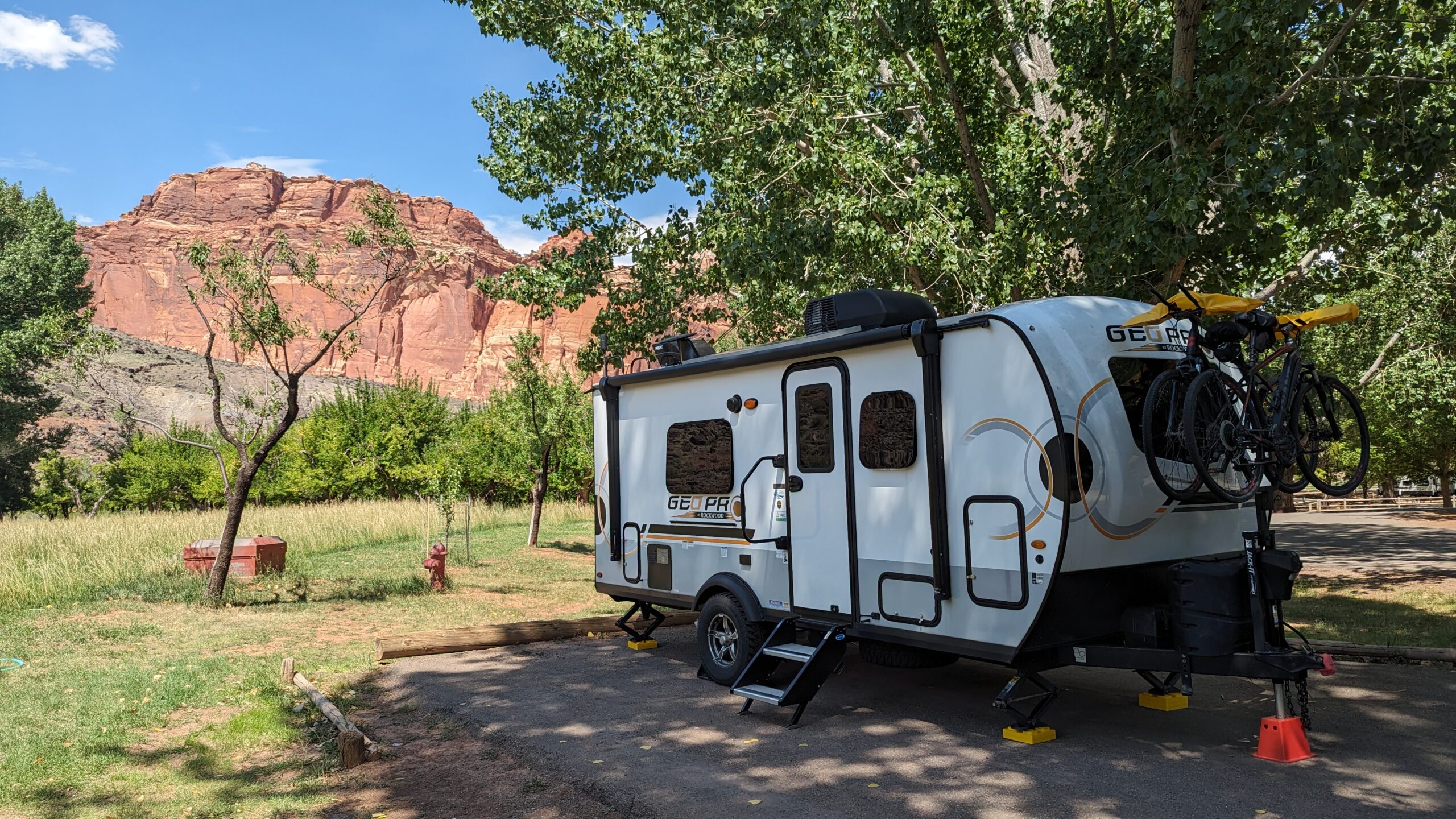We have a 20-ft travel trailer, which we feel is the perfect size for us! It’s great to be able to fit into some smaller campsites but also have plenty of space on the inside to be comfortable. We use most of these RV gear items every time we go camping. If you’re a new RVer, hopefully this can be a helpful starting place for you. If you’re a seasoned RVer, perhaps you’ll be inspired by a new idea or product. I know I enjoy learning tips and discovering new products from other RVers!
Please know that this is not a comprehensive list of RV gear. These are some of the items that we use and find helpful as we are out on our camping adventures.
In this post, I use affiliate links to recommend various products that have helped make our travel/camping experiences even better. If you click and purchase, I may receive a small commission on purchases at no extra cost to you.
As an Amazon Associate I earn from qualifying purchases.

Freshwater Gear
If you’re not familiar with RVs, they have freshwater holding tanks. This allows you to camp in places that may not have a direct water hookup. You can use the freshwater in your tank along with a pump for cooking, showering, etc.
Hoses
Most often, we camp at sites that do not have water hookups, so we’re usually filling our freshwater tank with a hose on the way to our campsite. We’ve found it’s generally easier to use a shorter hose to quickly fill the tank. If we have a water hookup at our campsite, we use our longer hose because our city water hookup is on the back of our travel trailer. We like the Zero G hose because it folds down nicely for storage.
Freshwater Hose – Short (Amazon link)
Freshwater Hose – Long (Amazon link)
Additional Accessories
To protect our pipes from high-pressure city water, we use a water pressure regulator. We also use a water filter anytime we’re filling our tanks or hooking up to city water.
Water Pressure Regulator (Amazon link)
Water Filter (Amazon link)
Sometimes connections are at odd angles. These elbow connectors have come in handy on multiple occasions. We always use one when we’re connecting the hose to our camper if we’re going to use city water.
Elbow Connectors (Amazon link)

Unhooking/Setting Up
We use these leveling blocks to level the camper left to right (driving up on some blocks). We also use them under the stabilizers, so our stabilizers aren’t sitting directly on the ground. Our first set of blocks were solid, and we found that rainwater collected inside them, which made it messy packing up after a rainy visit. With these blocks, rain runs right through and doesn’t collect inside the blocks themselves.
We also used to use the leveling blocks under our jack, but we found this used too many blocks. We purchased this jack block for this purpose, and we’ve been very happy with it!
Leveling Blocks (Amazon link)
Jack Block (Amazon link)

When setting up camp, it is very important to chalk the wheels on your RV. We started with smaller chalks. After about a year, we upgraded to these larger, sturdier chalks. We’ve been using them ever since! We also use a good old-fashioned level to make sure that the camper is set up level left to right and front to back.

Dumping Tanks
RV Sewer Hose
We actually bought this sewer hose while on a trip. We needed something longer than our previous hose for a full hookup site. It’s been great! It’s much heartier than our previous hose and it has the ability to bend in certain ways and retain its shape.
Our new travel trailer had smaller sewer hose storage, so we kept one of the 10ft pieces and purchased an additional 5ft extension for a total of 15ft feet in case we’d ever need it.
RV Sewer Hose (Amazon link)
RV Sewer Hose 5ft Extension (Amazon link)

Black Tank Maintenance
We want to keep our black tank from smelling, so we regularly add black tank deodorizer and a little Dawn dish soap to the tank after dumping. We typically fill the toilet bowl about halfway and then add a scoop of the deodorizer powder and a few squirts of Dawn. The smaller bottle of Dawn is convenient for saving space inside the camper.
Black Tank Deodorizer (Amazon link)
Dawn Dish Soap (Amazon link)
It’s also nice to have some decent gloves when working with the black tank. These gloves allow for a great grip, and they are sturdy.
Gloves (Amazon link)

Miscellaneous
We bought our first camper used, and it came with a backup camera already installed. When we bought our second camper, it did not come with a backup camera, so we purchased an installed this one ourselves. The backup camera can be helpful for backing into tricky sites.
RV Backup Camera (Amazon link)


